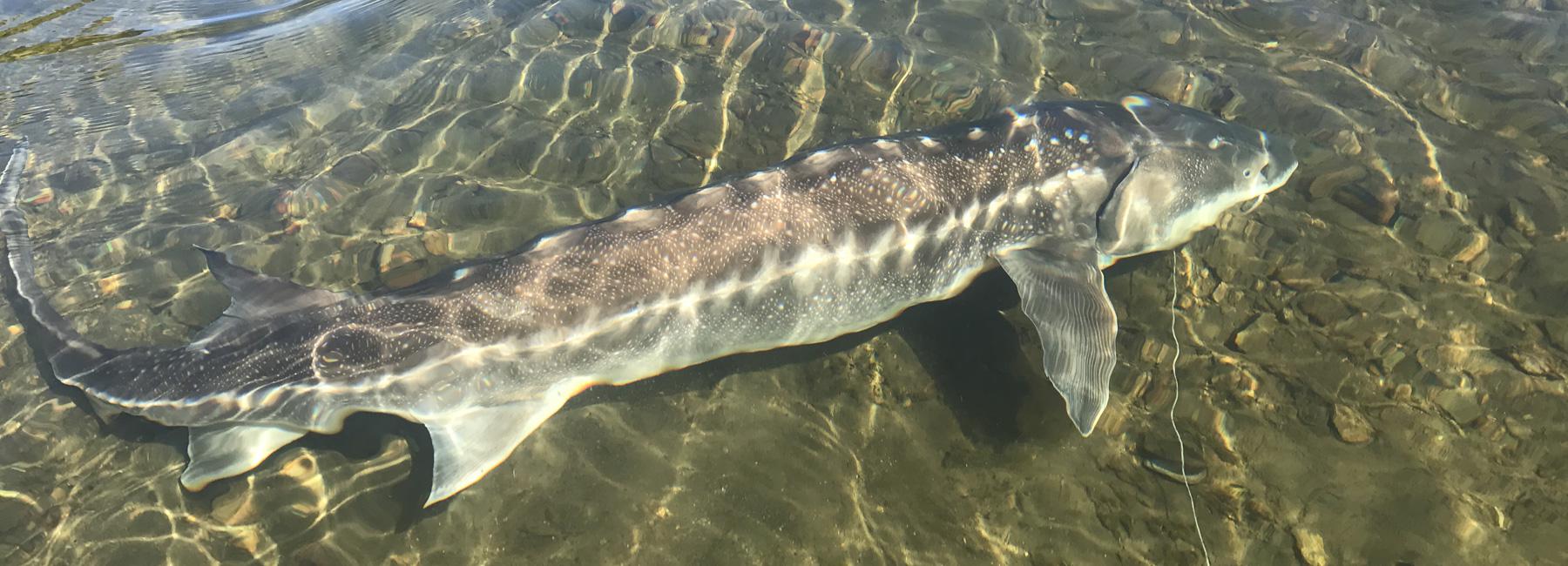
Life Cycle of the Fraser River White Sturgeon
The White Sturgeon - Introduction
There are approximately 29 species of sturgeon throughout the world. 2 main species are found on the west coast of North America – the green sturgeon and the white sturgeon. The white sturgeon comprises the vast majority of the sturgeon in the Fraser River.
The white sturgeon is largest fresh water fish in the world and the lower Fraser River from Hope to the tidal zone is the best location to fish for white sturgeon. The white sturgeon is reported to reach 6 metres (~19.5ft) long and 800 kg (1760lbs). Of the 68,000 Fraser River sturgeon tagged in the past 20+ years, the largest reported white sturgeon caught by rod & reel in the Fraser River Sturgeon Society Records was 3.44 metres. (measured from nose to fork of tail).
Spawning
Male Sturgeon spawn at around 15 years of age and females spawn starting at approximately 20. Females generally spawn every 4 to 10 years, in the spring when water temperature is ideal. The female lays between 700,000 and 4 million eggs when spawning. During the spawning process, many males fertilize the same eggs (communal broadcast spawning). There is no care provided to the eggs by the spawning sturgeon. An interesting note is that if conditions are not right, the females will not spawn and will re-absorb the eggs.
Juvenile Sturgeon
Eggs hatch between 5 and 25 days after fertilization of the eggs, depending on water temperature. The tadpole-like larvae live off their yolk sac for the first 1-2 weeks and then start to feed on plankton & insects. After approximately 3 weeks, the larvae develop scutes, and fins. These juvenile sturgeon (fry) are at great risk from predators, lack of food and other habitat influences. It is expected that less than 0.1% of the juveniles live past their first year.

The Growing Sturgeon
Sturgeon are carnivores, and feed exclusively on animal matter. A young sturgeon’s diet consists of: amphipods, mysids shrimp, small fish and any other meat they can find. Sturgeon eat bases on smell. They have poor eyesight, but an extremely powerful sense of smell. This adaptation is beneficial since they often lay in muddy river bottoms.
Larger sturgeon focus more on fish and often follow the salmon runs. They also feed on choronomids eulachon, sculpins and stickleback.
At 10 years, a white sturgeon is over 3 feet long and 15lbs. By 20, they reach about 5 ft long and 65lbs and at 40, a Fraser River White Sturgeon will be approximately 7.5 ft in length and 225 lbs.
Death Of A White Sturgeon
The white sturgeon has been a protected species in the Fraser River for a few decades now, so there is a much better chance of reaching a ripe old age. An old sturgeon could be as much as 100 years old. Continued protection of this prehistoric fish will ensure the population does well and more of these dinosaurs can be seen swimming the waters of the Fraser River.



 April 17th, 2024
April 17th, 2024
 March 27th, 2024
March 27th, 2024
 February 20th, 2024
February 20th, 2024

